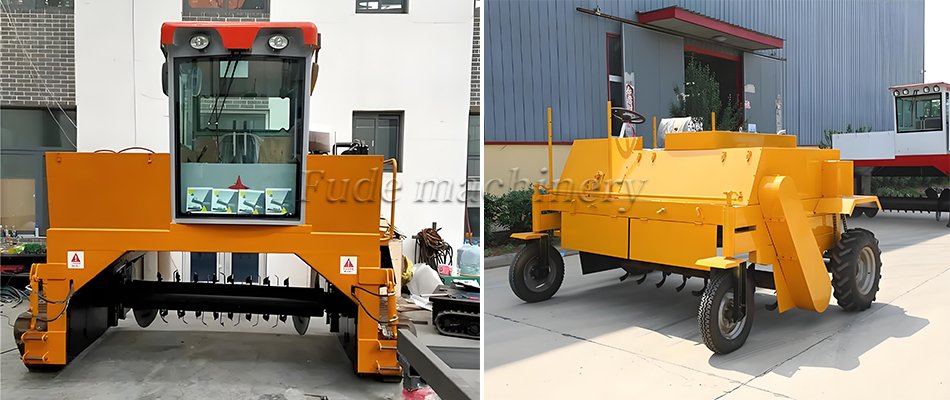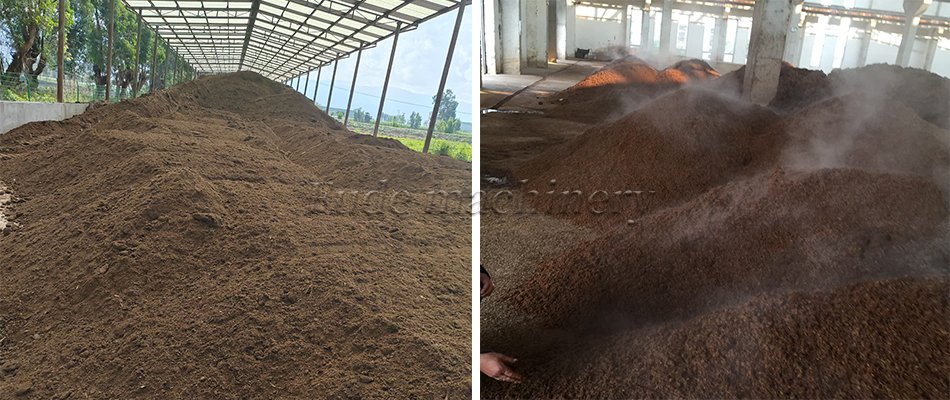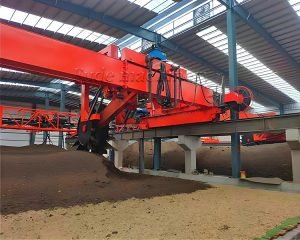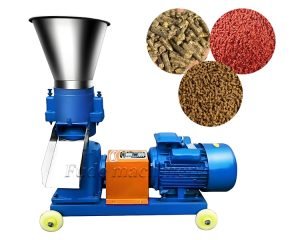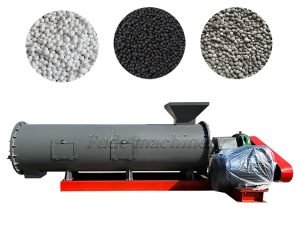What are the methods of composting organic fertilizers?
According to different classification conditions, fertilizer compost is divided into the following 5 categories:
According to the oxygen demand of microorganisms
it is divided into aerobic composting and anaerobic composting.
- Aerobic composting is a biochemical process that relies on the action of obligate and facultative aerobic microorganisms to degrade organic matter, and its decomposition speed is fast and the cycle is short. For this, we can provide you with professional aerobic composting machine.
- Anaerobic composting is a process in which organic matter is degraded by the action of obligate and facultative anaerobic microorganisms, and its decomposition rate is slow and the fermentation period is long. Most of the currently used composting is aerobic fermentation.
According to the temperature requirements
- It is divided into medium temperature compost and high temperature compost. The fermentation temperature of medium-temperature composting is 14~45℃, which cannot achieve the purpose of harmlessness.
At present, this method is rarely used. The fermentation temperature of high-temperature composting is 50-65℃, and the highest is 80-90℃. It is currently the most widely used fermentation method. In-vessel fermentation tank is a typical high remperature composter.
According to the form of material movement in the composting process
- It is divided into static composting and dynamic composting. After the static compost pile is built, it will not be overturned until the compost is fully decomposed and transported out.
Dynamic composting adopts continuous or intermittent feeding or discharging dynamic mechanical composting method, and the fermentation efficiency is high.
According to the composting method
- It is divided into windrow-type composting and trench-type composting. windrow-type composting is that the materials are piled into strips for fermentation in an open site, and the crawler-type mechanical turning machine is used to turn the pile.
The trench-type composting is to put the material into a fixed tank and close it, and turn it over with a top track-type turning machine. Click here for suitable compost machine
According to the fermentation process
- It is divided into primary fermentation and secondary fermentation. A fermentation starts from the fermentation, goes through a medium temperature period, a high temperature period and then a cooling period.
Secondary fermentation is that after primary fermentation, most of the easily degradable organic substances in the compost material have been degraded by microorganisms, but there are still some easily degradable and a large number of refractory organic substances, which need to be further fermented to make them change.
It can form relatively stable organic matter such as humic acid and amino acid to reach maturity.
- Optimize the fermentation environment: turn the heap to improve ventilation, supply oxygen for microorganisms, avoid local anaerobic, reduce odor.
- Accelerating the maturing process: evenly mixing the material, breaking up large pieces, increasing the contact area, regulating the temperature, and shortening the production cycle.
- Improve the quality of fertilizer: Ensure even ripening, evaporate harmful gases, reduce salinity, reduce harmful substances and weed seeds.
- Improve production efficiency: mechanized operation replaces manual labor, reduces labor intensity and adapts to mass production.
- Improve the structure of heap: increase porosity, promote air circulation, evenly distribute moisture, and enhance the fermentation effect.
What is the use range of organic fertilizer turning machine?
Livestock breeding industry
- Livestock and poultry manure: raising pigs, cows, chickens, sheep and other farm manure, mixed with auxiliary materials turned and fermented into fertilizer.
- Special farming: raising deer, mink and other farm manure, processed into organic fertilizer for planting.
Agricultural cultivation
- Crop straw: wheat, corn and other straw is crushed and mixed with manure to ferment and return to the field.
- Mushroom dregs: rich in nutrients, fermented into highly efficient organic fertilizer for crop cultivation.
Agro-food processing
- Fruit and vegetable waste: fruit peels, vegetable leaves, etc. are mixed and fermented with manure to realize comprehensive utilization.
- Brewing dregs: containing a variety of nutrients, fermented into high-quality organic fertilizer for farmland.
Municipal Environment Protection
- Municipal sludge: mixed with straw and other fermentation to achieve sludge reduction, harmlessness and resource utilization.
- Garden waste: tree branches, leaves, etc. are fermented into fertilizer for garden plant maintenance.
Our Fude machinery production equipment includes: fermentation rake, dryer, granulator, crusher, mixer, disc granulator, packaging machine organic fertilizer production line, etc.
The company will continue to adhering to the quality first, customer first “business philosophy to provide customers around the world with higher quality organic fertilizer equipment solutions.
 Organic fertilizer equipment,organic fertilizer production line,organic fertilizer equipment factory
Organic fertilizer equipment,organic fertilizer production line,organic fertilizer equipment factory
